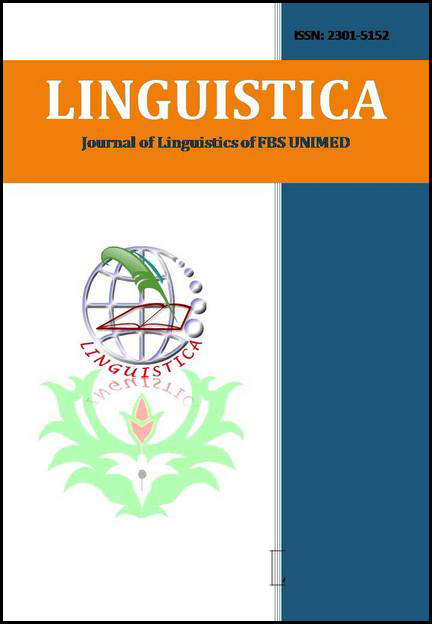FIGURATIVE MEANING IN ALANI HAPOGOSAN MOVIE
DOI:
https://doi.org/10.24114/jalu.v6i2.7585Abstract
This study deals with the Figurative Meaning in Alani Hapogosan Movie. The objectives of the study are to describe the types of figurative language used in Alani Hapogosan Movie, the dominant type of the figurative language and the cultural values of the movie itself. This study was conducted by descriptive qualitative method. The data were collected from the Alani Hapogosan by transcribing them. In analyzing the data, there are 4 types of figurative language were used. The most dominant used is Metaphor 25 (44,64%), the second is Idioms 18 (32,14%), the third is Proverbs 11 (19,64%), the last is Metonymy 2 (3,57%) and there was not Irony occured in Alani Hapogosan movie. There were 8 cultural values that occured in the movie: Kinship (Kekerabatan), Religion (Religi), Wealth (Hamoraon), Honor (Hasangapon), Progress (Hamajuon), Law (Hukum), Guardianship (Pangayoman), Conflict (Konflik). And there was a cultural values that didn™t occur in Alani Hapogosan movie. It is Have Many Children (Hagabeon).Downloads
Published
2017-04-01
How to Cite
Sumarsih, W. B. D. and. (2017). FIGURATIVE MEANING IN ALANI HAPOGOSAN MOVIE. LINGUISTICA, 6(2). https://doi.org/10.24114/jalu.v6i2.7585
Issue
Section
Articles
License
Copyright (c) 2017 Wantika Br Dabutar and Sumarsih

This work is licensed under a Creative Commons Attribution-ShareAlike 4.0 International License.
Authors who publish with this journal agree to the following terms:
- Authors retain copyright and grant the journal the right of first publication with the work simultaneously licensed under a Creative Commons Attribution License that allows others to share the work with an acknowledgment of the work's authorship and initial publication in this journal.
- Authors are able to enter into separate, additional contractual arrangements for the non-exclusive distribution of the journal's published version of the work (e.g., post it to an institutional repository or publish it in a book), with an acknowledgment of its initial publication in this journal.
- Authors are permitted and encouraged to post their work online (e.g., in institutional repositories or on their website) prior to and during the submission process, as it can lead to productive exchanges, as well as earlier and greater citation of published work (See The Effect of Open Access).
- This work is licensed under a Creative Commons Attribution-ShareAlike 4.0 International License.








